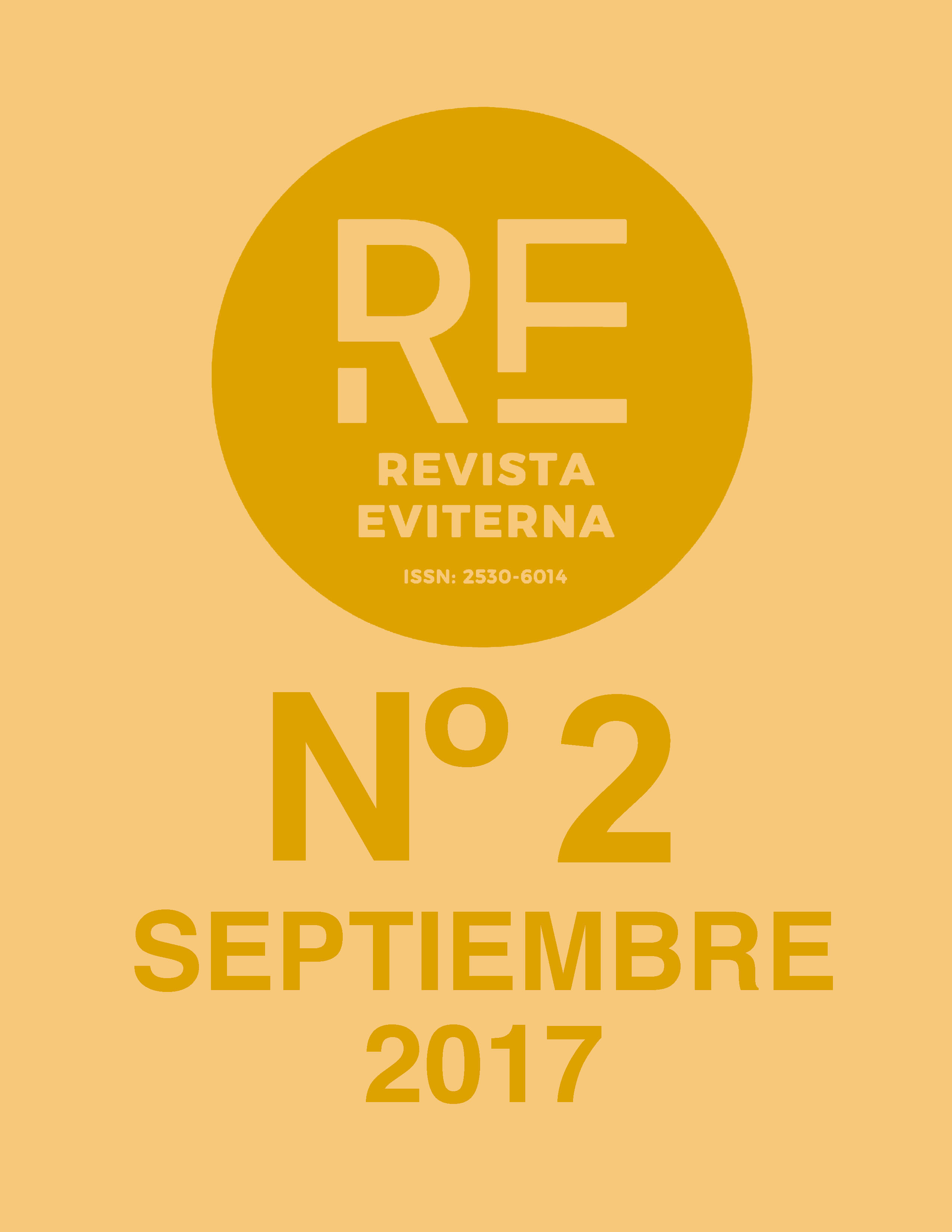Paradisiacal Symbolist Andalucía
DOI:
https://doi.org/10.24310/Eviternare.v0i2.8120Keywords:
Symbolism; Spanish Art; Orientalism; FlemishismAbstract
The influence of Symbolism reaches Spain with some delay and that is why the chronology differs from the rest of the examples in Europe. In Spain this period is betweeen the years 1890 and 1930. The Spanish artists received those ideas and influences in a very particular way. Modernism, the Generation of 98, historical Nationalisms, Orientalism, Aestheticism or Flemishism reveal symbolist signs.
Downloads
Metrics
Publication Facts
Reviewer profiles N/A
Author statements
Indexed in
-
—
- Academic society
- N/A
- Publisher
- Universidad de Málaga
References
ALARCÓ, Paloma (ed.) (2012), Gauguin y el viaje a lo exótico, Museo Thyssen-Bornemisza: Madrid.
BAROJA, Pío (2005), Camino de perfección (Pasión mística), Alianza: Madrid. (1ª edición 1902)
BAROJA, Pío (2013), El mundo es ansí, Alianza Editorial: Madrid. (1ª edición 1912)
BRIHUEGA, Jaime y PÉREZ SEGURA, Javier (eds.) (2003), Julio Romero de Torres. Símbolo, materia y obsesión, TF Editores: Madrid.
CALVO SERRALLER, Francisco (1998), Paisajes de luz y muerte. La pintura española del 98, Tusquets: Barcelona.
CALVO SERRALLER, Francisco (ed.) (1997), Pintura Simbolista en España (1890-1930), Fundación Mapfre: Madrid.
CAPARRÓS MASEGOSA, Lola (1999), Prerrafaelismo, Simbolismo y Decadentismo en la pintura de Fin de Siglo, Universidad de Granada: Granada.
CODDING, Mitchel A. (ed.) (2017), Tesoros de la Hispanic Society of America. Visiones del mundo hispánico. Museo Nacional del Prado, The Hispanic Society of America, El Viso: Madrid.
FONTBONA, Francesc (2006), Hermen Anglada-Camarasa, Fundación Mapfre: Madrid.
GONZÁLEZ CASTRO, Carmen y QUESADA DORADOR, Eduardo (2012), "Gitanos en el arte español", en AMIC, Sylvain y JIMÉNEZ BURILLO, Pablo (eds.), Luces de Bohemia. Artistas, gitanos y la definición del mundo moderno, pp.40-46, Fundación Mapfre, Grand Palais París: Madrid.
GONZÁLEZ DE DURANA, Javier (ed.) (2013), Francisco Durrio (1868-1940). Sobre las huellas de Gauguin, Museo de Bellas Artes de Bilbao: Bilbao.
HERRERA, Aurora (ed.) (2016), Intermedios. La cultura escénica en el primer tercio del siglo XX español, Centro Conde Duque Ayuntamiento de Madrid, Acción Cultural Española (AC/E): Madrid.
JUSTO, Isabel (ed.) (2014), Herederas de las majas de Goya, Fundación Bancaja: Valencia.
LITVAK, Lily (1986), El sendero del tigre: Exotismo en la literatura española de finales del siglo XIX (1880-1913), Taurus: Madrid.
LITVAK, Lily (1979), Erotismo fin de siglo, Bosch: Barcelona.
LITVAK, Lily (2008), "Hacer vivible lo invisible. El Simbolismo en la pintura española,1891-1930", en
JIMÉNEZ BURILLO, Pablo (ed.), Entre dos siglos. España 1900, pp.23-47, Fundación Mapfre: Madrid.
LOMBA, Concha (ed.) (2016), Fatales y Perversas. Mujeres en la plástica española (1885-1930), Vicerrectorado de Cultura y Proyección Social Universidad de Zaragoza y Santander Universidades: Zaragoza.
MASIÁ, Pascual (ed.) (2005), Manuel Benedito, pintor (1875-1963), Centre del Carme: Valencia.
MENDIETA, Verónica (ed.) (2004), Juan de Echevarría (1875-1931), Fundación Mapfre, Museo de Bellas Artes de Bilbao: Madrid.
REVILLA UCEDA, Miguel Ángel (ed.) (1987), Gabriel Morcillo (1887-1973) Hacia Oriente, Caja General de Ahorros de Granada: Granada.
VILLENA, Luis Antonio de (1987), "Vuelo, mundo y transgresión de Gabriel Morcillo", en REVILLA UCEDA, Miguel Ángel (ed.), Gabriel Morcillo (1887-1973) Hacia Oriente, pp.19-27, Caja General de Ahorros de Granada: Granada.
SOLANA, Guillermo (ed.) (2004), Gauguin y los orígenes del simbolismo, Fundación Caja Madrid, Museo Thyssen-Bornemisza: Madrid.
TAYLOR WATKINS, Alma (2005), El erotismo en las novelas de Felipe Trigo, Renacimiento Iluminaciones: Sevilla.
TRIGO, Felipe (2009), Las Evas del Paraíso, e.litterae, Barcelona. (1ª edición 1910)
UGARTE ORTEGA, Angélica (2016), Tesis Doctoral dirigida por el Dr. Jaime Brihuega. Extensión y posición del Simbolismo español en las afueras del Modernismo catalán Universidad Complutense de Madrid - UCM http://eprints.ucm.es/39285/ (Consultado: 23/07/2017)
UNAMUNO, Miguel de (2005), En torno al casticismo, Cátedra: Madrid. (1ª edición 1902)
VALLE-INCLÁN, Ramón del (2008), Sonata de primavera. Sonata de estío. Memorias del Marqués de Bradomín, Espasa-Calpe: Madrid. (1ª edición 1904)
VERHAEREN, Émile y REGOYOS, Darío (1999), España Negra, Terra Incógnita: Barcelona. (1ª edición 1899)
ZUBIAURRE, Maite (2014), Culturas del erotismo en España (1898-1939), Cátedra: Madrid.
Downloads
Published
How to Cite
Issue
Section
License
All the contents published in Revista Eviterna are subject to the Creative Commons Reconocimento-NoComercia-Compartirigual 4.0 license, the full text of which can be found at <http://creativecommons.org/licenses/by-nc-sa/4.0>
They may be copied, used, disseminated, transmitted and publicly exposed, provided that:
The authorship and original source of your publication (Journal, editorial and URL of the work) are cited.
They are not used for commercial purposes.
The existence and specifications of this use license are mentioned.

Copyright is of two kinds: moral rights and patrimonial rights. Moral rights are perpetual, inalienable, inalienable, inalienable, inalienable and imprescriptible prerogatives.
In accordance with copyright legislation, Revista Eviterna recognizes and respects the moral rights of the authors, as well as the ownership of the economic right, which will be transferred to the University of Malaga for dissemination in open access.
The economic rights refer to the benefits obtained by the use or disclosure of the works. Revista Eviterna is published in open access and is exclusively authorized to carry out or authorize by any means the use, distribution, disclosure, reproduction, adaptation, translation or transformation of the work.
It is the responsibility of the authors to obtain the necessary permissions of the images that are subject to copyright.







12.png)



